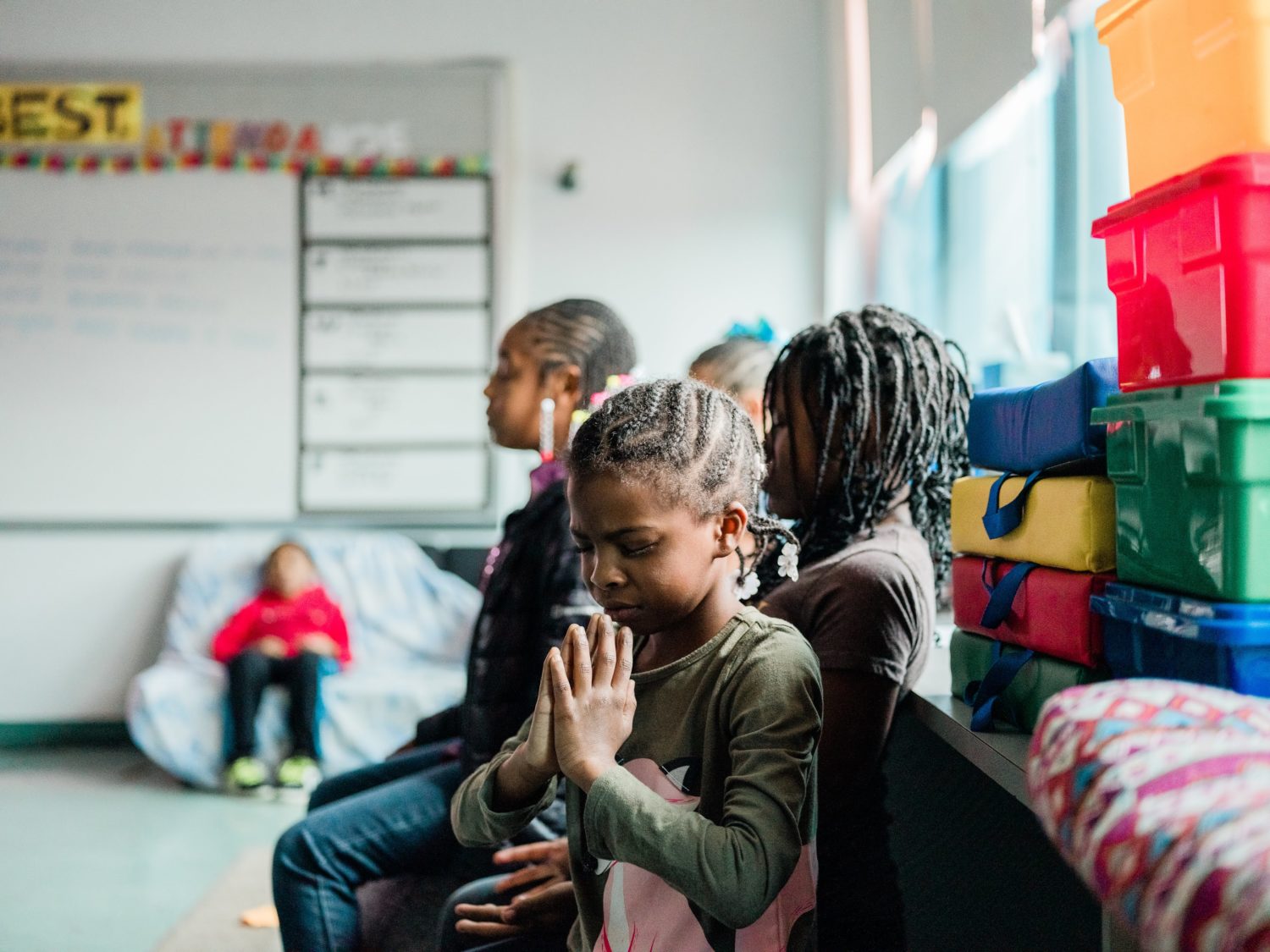
What families can learn from this school’s mental health support for kids
By Melissa Rayworth
The best moments of social-emotional learning at Intermediate Unit 1’s campus schools often begin with a casual question. As a student in the school’s Fab Lab maker space uses a 3D printer or sketches by hand, a social worker might pass by and ask how things are going.
While hands are busy, minds tend to open up. Focused on their latest project, the student may share a few words about how they’re feeling.
One-on-one therapy is important, and these students meet with counselors daily. But often it’s the brief chats or minutes of mindful breathing before a class that help most, says Joseph Mahoney, IU1’s director of behavioral and mental health and social work services.
These informal moments are “engaging and hands-on in sort of a non-threatening environment,” he says. “We’re not sitting and processing our feelings. We’re just talking.”
IU1 had put effort into crafting this range of hands-on approaches to mental health for use in their school buildings. Then came the pandemic.
The challenge
When school abruptly became remote last spring, mental health support was vital. So in-school therapy appointments at IU1 were immediately shifted to a telehealth system. But what about that informal mental health work that had been happening in the Fab Lab?
“It was very challenging at first to figure out,” Mahoney says. “How do we still provide the services that we know these kids need — and probably, truthfully, need even more now than ever?”
What they did
Through their online Fusion Flex curriculum, IU1 offered a mix of mental health support, career training and something as close to the Fab Lab’s project-based learning experience as possible. One tool they used: Move This World, a social-emotional curriculum made up of videos, movement lessons and opportunities for creative expression.
IU1 also encouraged teachers to make time for mindfulness exercises. And they made communication a priority, Mahoney says, “through Zoom, through Skype, through FaceTime, through old fashioned phone calls – anything to still provide that level of support and oversight.”
Why this worked
Mindfulness doesn’t replace therapy. But it can help reduce stress. These exercises – and the practice of talking about how we all need stress-reducing techniques – also help destigmatize the anxiety so many students feel.
Teachers don’t require extensive training to lead these exercises, no special or costly materials are needed, and the time commitment is small: Kids can get grounded during a five-minute deep listening exercise by simply focusing on the sound of something in their home, like a humming air conditioner. It doesn’t have to be difficult to build this into every school day.
What other communities can take from this
Schools that don’t specifically serve students with developmental or emotional challenges may not have prioritized mental health support in their initial shift to remote learning. But we know that recent research paints a worrisome picture of anxiety levels among students nationwide. So incorporating mental health support into daily learning can be valuable in any district.
Valuable practices for any family
Adding just a few minutes of breathing, listening or movement exercises to each day may seem unfamiliar at first. But it soon becomes normal practice. As that happens, it can open up conversations about stress between students and adults.
The pandemic is showing all of us “how important social-emotional learning and mental health supports are — not only to those students who may have a diagnosed condition but to those other students that don’t have a diagnosis,” Mahoney says.
When we normalize the process of building coping skills and asking for help, he says, kids build the confidence to reach out when they’re struggling.
Mental health support will continue at IU1 – and hopefully in many communities – long after the pandemic ends. Mindfulness, movement and hands-on learning have become central to their approach, whether students are learning in school or remotely.
Designing that curriculum is an ongoing process, Mahoney says, but the big takeaway is clear: You can thread moments of social-emotional learning and mental health support into each day by empowering teachers, counselors, paraprofessionals and families to participate. When they do, everyone benefits.